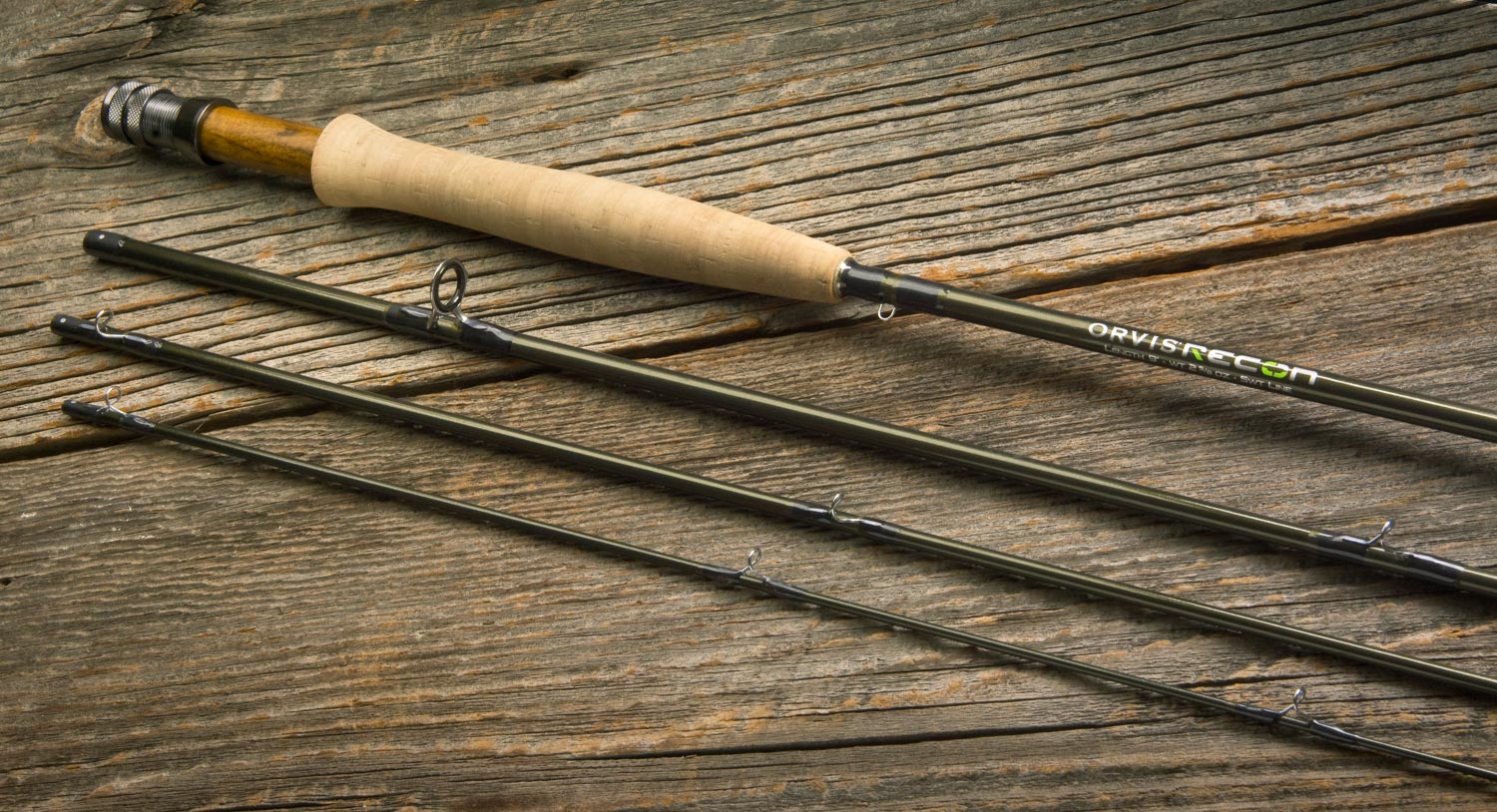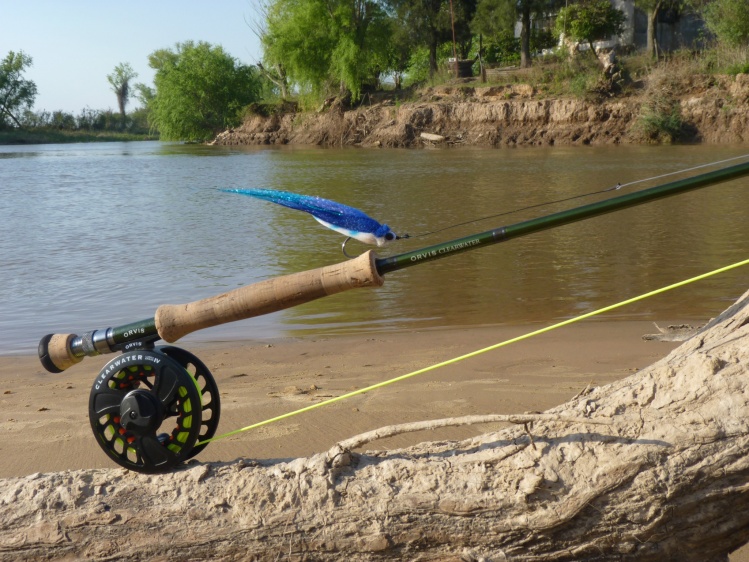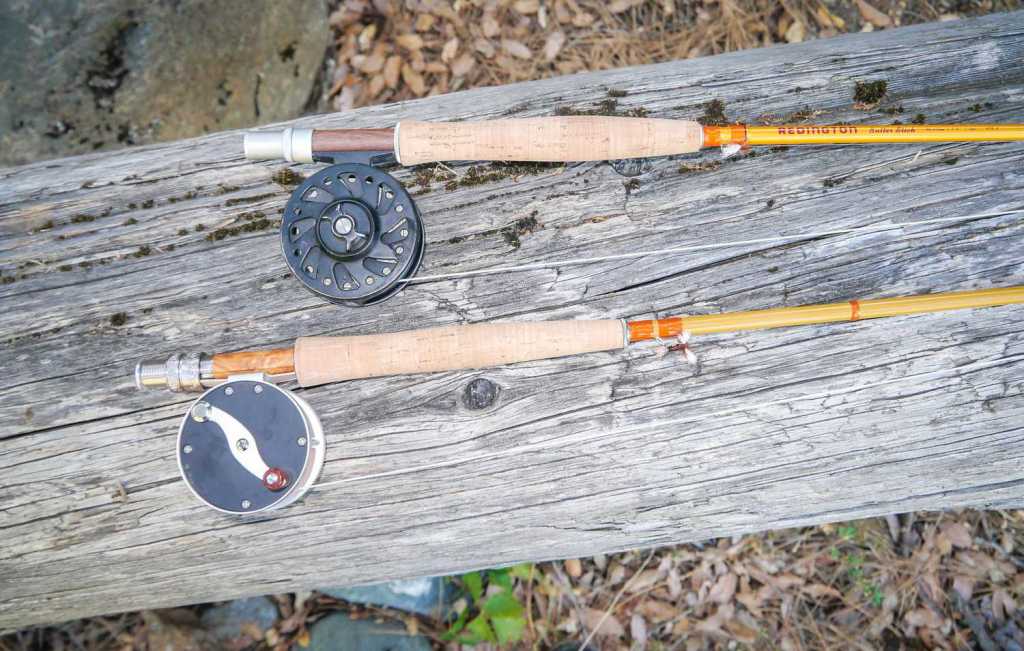Our resident Fly Fishing expert and department manager Randy gives you some pointers on choosing a fly rod...
As my fellow anglers and trout junkies suffer through this warm winter yearning for opening day, we begin to think of fonder days and hungry trout. Some of us even don the wrist brace from countless hours at the vice, a pain we wear as a badge of honor among our fellow sufferers. Though winter may throw her ugly head one more time, spring is surely in our hearts and on our minds, and most of us are starting to take inventory of the old vest or bag, early or not. As we do we start to list the things we must have, the things we want, and maybe even things we don’t need. New tools of the trade are available every year, improvements in technology constantly change what the angler must have, and this year is no different. Here at the shop we have several technologically advanced new rods that have recently come to market. The problem is that even the most advanced angler can find the specs overwhelming, so I thought I would try my best at simplifying this overwhelming information and make it a little more accessible.
Rods can be broken into several categories but for sake of time and sanity I break them into three, based strictly on action- fast, medium, and slow. Nowadays the market as well as the majority of anglers leans to the faster rods, rods that are stiffer in flex and often lighter in the hand. Graphite rods like the Orvis Recon or Redington Vapen offer a faster action on a super light platform; these rods deliver a fly line with precise accuracy even in the hands of a novice, and with a lot of power. This makes these rods great for streamer fishing, delivering dries at very long distances, and nymph chain casting because the line turns over easier. Faster rods also are easier to mend line with and faster to set the hook (this could be an advantage or disadvantage), however they also are loud in presentation of the fly and don’t load close up nearly as well as softer slower rods. When fighting fish these rods are less forgiving to the tippet because they absorb less shock, and cowboying the fish will surely lead to broken leaders and hearts.

Medium action rods are a bit more rare these days, probably because of the polarization of anglers’ preferences in recent years, but not that long ago these rods ruled the market. At Kenco we have the Redington Helium and the Orvis Clearwater that would fall into this category. These rods, in the simplest terminology, do everything good and nothing great. From casting, mending, setting the hook, and fighting the fish, to drys, wets, and streamers; they do it all well, just not the best. In many ways the medium class gets set aside by many anglers, but to me they represent a time when the angler didn’t want or need several rods for every scenario the stream throws at us, but instead one that could do it all no matter the condition. Like the masses I appreciate these rods for what they are, but sometimes the right tool is the difference between one fish and twenty. Many companies will categorize rods as medium even though the rods are really a faster action, it’s just the nature of the faster rod time period that we live in, so be sure to try before you buy.

When anglers think slow rod most of us will think of the old bamboo rods or reminisce about the old glass rods many of us grew up on. Nowadays however there is a new revival of the old slow rods, it’s been dubbed the Glass Revolution, and it has alot of us glass bums coming back into the light. Here at the shop we cater to this revival with the Orvis superfine glass, the Redington Butterstick, and even custom built bamboo rods for the real purist. So why is glass making such a come back? New Glass rods offer a rod that is less whippy that the old Fenwicks at the tip, but a flex that goes straight to the butt of the rod. This gives the new glass rods more power without sacrificing the feel that brings us coming back for more, frothing at the mouth. The only way to describe it is the rods feel alive and have a lot more personality to them. They are the farthest from forgiving in your cast though and require sharp timing and veteran technique, they make the great and good caster shine and the novice look awful. Those of us that fish them do it not only for challenge though, for in many scenarios they excel well beyond their faster counterparts. The hook set may be slower but in faster hands slowing the hook set is advantageous and because they absorb so much shock from the fish you can fish smaller tippets and still get the fish to the net faster. They also feel everything the fish does in a fight so your ability to anticipate what the fish is going to do (jump, run, dive) is unparalleled also leading to more fish netted and less lost.

Rods come in all flex styles; actions, lengths and materials, and all have advantages and disadvantages. Choosing the right rod for yourself is pure preference, and more than likely your like me and will find you have several preferences depending on condition and your personality. My comfort to those laboring over the decision of what rod to buy is that this sport is addicting and if you’re hooked it won’t be the last rod you will buy, I promise.
